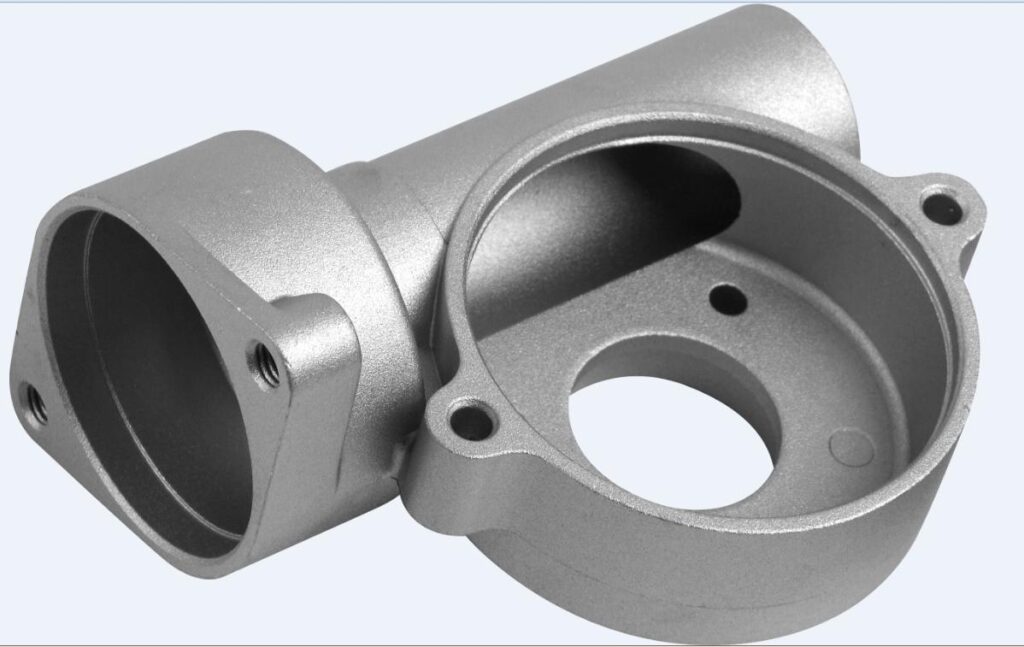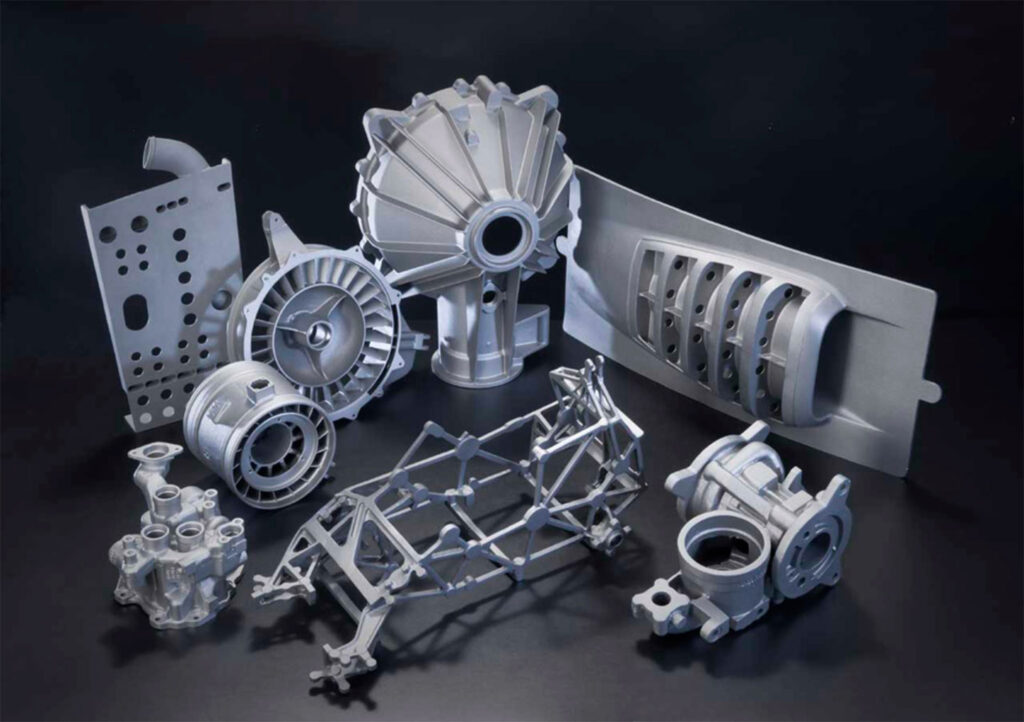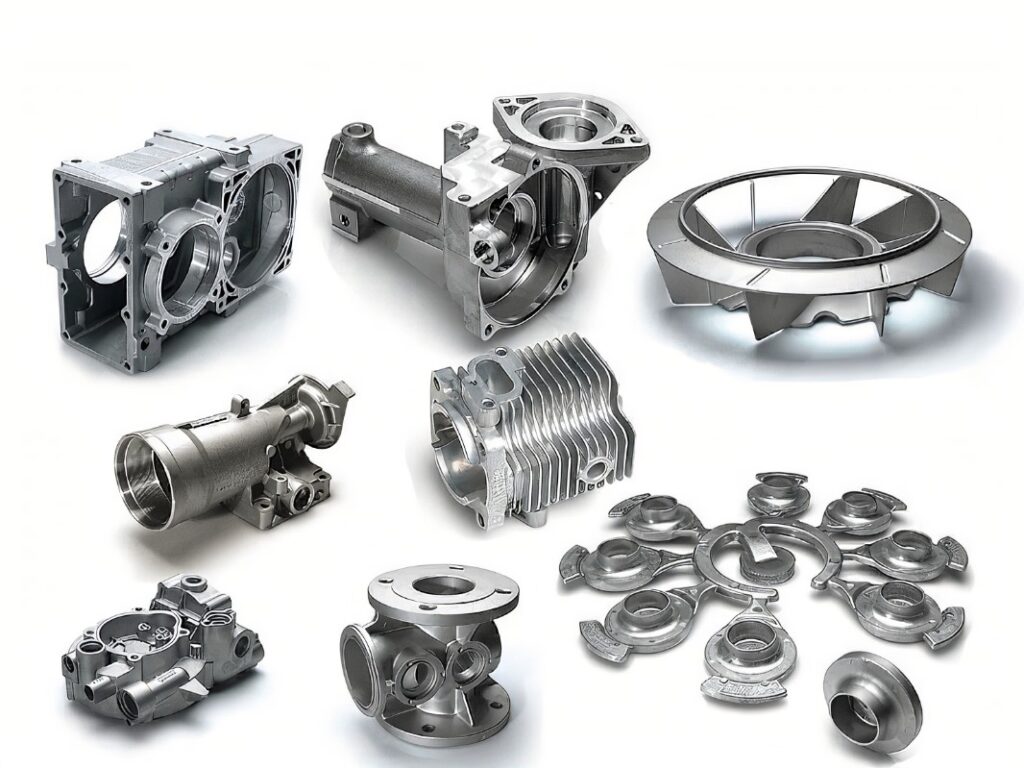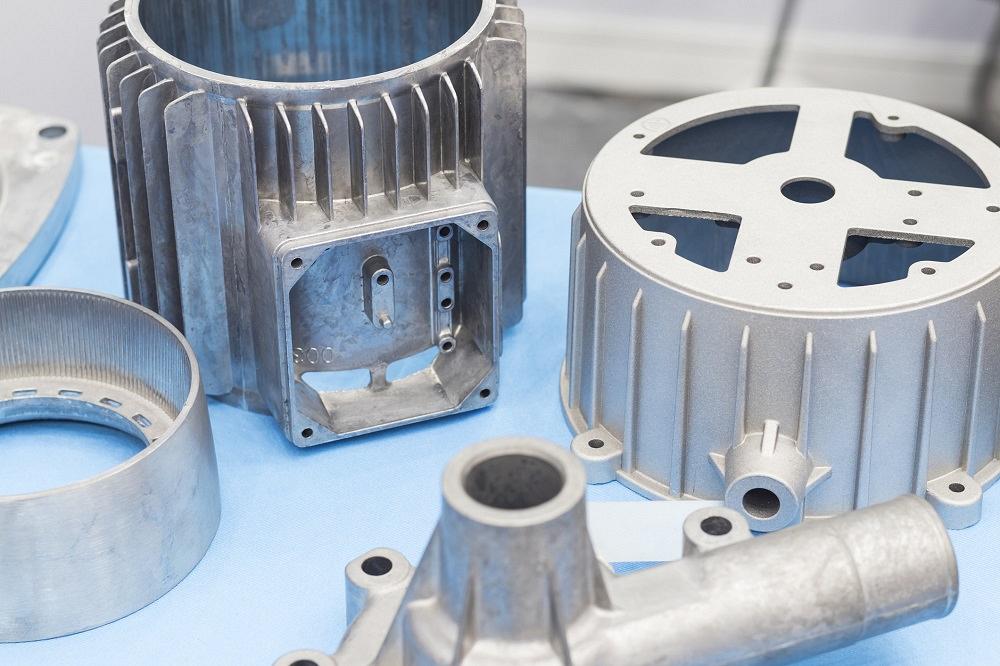Cast Aluminum: A Detailed Guide to Aluminum for Casting
Aluminum castings are lightweight components made from aluminum and/or other materials using the aluminum casting process. It is an integral part of industries that require aluminum’s durability, strength, and lightness, as well as compatibility with complex product designs.
There are a variety of aluminum casting processes, each with unique settings and requirements. As a result, they are responsible for casting aluminum components with different properties. This article will cover aluminum casting and how to choose the right casting process for your project.
1. What is Cast Aluminum?
Cast aluminum refers to components made from aluminum and/or other metals using one of a variety of casting processes. In general, most aluminum casting processes involve heating aluminum (and other metals) and pouring them in molten form into a prepared mold with the desired product design. After that, the molten aluminum cools, solidifies, and forms the shape of the cavity.
Aluminum castings have the properties of aluminum and other metals. In addition, it forms an outer coating of aluminum oxide that helps prevent corrosion and is stronger than traditional aluminum materials.
2. Cast Aluminum vs. Cast Iron
Cast iron looks similar to cast aluminum. However, they differ in terms of base materials and inherent properties. Here are some comparisons between the two materials:
–Weight: Aluminum castings are lighter than cast iron, but they are not less strong and durable.
–Dimensional tolerance: Since aluminum material is softer than iron material, aluminum castings have better dimensional tolerances than cast iron.
–Precision and accuracy: Aluminum is softer than iron, which improves machinability, precision, and accuracy.
–Thermal resistance: Cast aluminum has a higher heat capacity than cast iron. Therefore, it heats up faster and dissipates heat faster than cast iron.

3. Cast aluminum vs. wrought aluminum
Cast aluminum has a higher carbon content than wrought aluminum. Therefore, cast aluminum is stronger and has better mechanical properties. Here are three important differences between the two materials.
–Different product forms: On the one hand, wrought aluminum is usually suitable for CNC aluminum machining or aluminum extrusion. Therefore, they come in sheet or bar form. On the other hand, aluminum castings have a solid form based on billet form or final product molding.
–Different alloying elements: Two materials can have the same alloying elements. However, they differ in composition and quantity. For example, aluminum castings have a higher silicon content. Therefore, they have better fluidity.
– Different product characteristics: Cast aluminum is the stronger of the two parts. In contrast, wrought aluminum has higher tensile strength, machinability, and good dimensional accuracy.
4. Different aluminum casting processes
There are three main metal casting processes applicable to aluminum. Here are the processes and their characteristics.
1) Die Casting
Die casting is the most popular aluminum casting process for casting aluminum parts. There are two processes: low-pressure die casting and high-pressure die casting, the latter of which is best suited to the material.
Die casting involves preheating aluminum and injecting it under high pressure into a die casting mold designed according to the intended product. After cooling, the cast aluminum part is removed from the mold, and the cycle is repeated after the mold cools down.
One of the advantages of die casting is that die cast aluminum has excellent electrical and thermal conductivity. In addition, they are strong and resistant to corrosion, wear, and heat, making them suitable for large-scale production of parts in the cooking, aerospace, and medical industries.
2) Sand Casting
Sand casting is the most common casting process in the manufacturing industry. Sand casting is very suitable here due to its ability to withstand high temperatures.
The process involves preparing the mold with sand. Then, the aluminum is heated and the molten aluminum is poured into the sand mold. After cooling, the cast aluminum parts are taken out.
Sand cast aluminum has low dimensional accuracy and a rough surface. Therefore, post-processing options such as trimming are required in most cases. The aluminum casting process is suitable for manufacturing aluminum gears, accessories, gas tanks and oil tanks, etc.
3) Permanent mold casting
Permanent mold casting is similar to die casting. However, the difference between the two processes lies in the mechanism of injecting aluminum into the mold. Unlike die casting, permanent mold casting uses gravity instead of high or low pressure to fill the mold. Therefore, it reduces turbulence during injection.
Aluminum castings made with this process have high strength, good surface finish and high dimensional accuracy. This process is suitable for manufacturing aluminum parts in the automotive and aircraft fields.
5. How to choose the right aluminum casting process?
Each casting process has its advantages and disadvantages. To choose the right process for your project, consider the following factors:
1) Design complexity
The design complexity of the final product will affect the choice of casting process. Large and complex aluminum castings are mostly cast with sand molds, and sand casting is the first choice for products with complex designs. For dimensionally accurate aluminum castings, permanent mold casting is a better choice.
2) Production Speed
Die casting uses a pressurized injection process. Therefore, it is suitable for large-scale production of aluminum parts. In terms of speed, sand casting is the next process, and permanent mold casting is the last.
3) High Quantity
Die casting is the most suitable process for making many aluminum castings. However, to strike a balance between high production and molds, sand casting and permanent mold casting are better choices.
4) Prototyping
Sand casting is the most suitable process for prototyping because the investment cost required is low. Other processes have higher investment costs and are therefore less suitable because only a few parts are needed for prototyping.
5) Strength and Surface Finish
Permanent mold casting has the most favorable balance between strength and surface finish. However, the strength of sand casting and die casting is comparable, while the surface finish of die casting is better.

6. Optional Surface Finishing of Cast Aluminum Parts
Finishing processes can be for aesthetic or functional purposes. Here are several finishing processes you can consider.
1) Powder coating
Powder coating is a dry finishing process that involves applying a dry powder to the aluminum. After application, aluminum castings become more durable and have better corrosion resistance.
2) Painting
This is a popular aesthetic finishing process. However, it can also have a functional purpose. It involves applying a layer of paint to the aluminum part. First, the material is cleaned and sanded. Then, a self-etching primer is added, along with a layer of paint and an optional extra protective layer containing an enamel sealant. Painting can be a means of adding color or improving the corrosion resistance of the material.
3) Electroplating
Electroplating involves covering one material with a thin layer of another material. The process is performed by electrolysis. Using electrodes, an electric current is passed through a conductive solution (electrolyte). For example, if you want to plate copper on cast aluminum, you need a copper-based electrolyte and a copper anode, with the cast aluminum acting as the cathode. The copper in electroplating comes from the copper solution, which the copper anode replaces. The process adds both aesthetics and protection to aluminum castings.
4) Anodizing
Anodizing is an electrochemical process that converts the surface of cast aluminum into a durable and highly corrosion-resistant anodized coating. The process involves immersing the aluminum casting in a bath of sulfur or chromic acid electrolyte (depending on the type) while passing an electric current through the medium.

7. Advantages of Aluminum Castings
Cast aluminum parts have advantages over other materials. Therefore, they are an essential component of several industries. Here are a few reasons why you should consider using them.
1) Fine Surface Finish
They have a smooth and silvery appearance. Therefore, it reduces the need for expensive surface treatment processes. Moreover, their excellent surface finish makes them suitable for common household products such as cookware.
2) Complex Shapes
The three common industrial aluminum casting processes can efficiently cast aluminum into any shape. Therefore, manufacturers can more easily manufacture parts with complex geometries and precise dimensions.
3) Lightweight Components
Aluminum castings are lightweight, but their strength, durability, and other mechanical properties are not compromised. Therefore, they are suitable for manufacturing parts that need to be lightweight but strong. For example, the automotive industry widely uses aluminum castings to improve fuel efficiency.
8. Common Applications of Cast Aluminum
Many major industries use cast aluminum due to its excellent physical and chemical properties. Here are some common applications of this material.
1) Medical Industry
Medical component manufacturers rely on aluminum castings to make prosthetics, surgical trays, etc., as aluminum castings have the characteristics of high strength and light weight. Apart from this, the process is also suitable for making complex and precise shapes, which is what the industry is known for. Moreover, aluminum is a suitable material due to its corrosion resistance, as many medical devices come in contact with body fluids.
2) Automobile Industry
Automotive component manufacturers rely on aluminum castings to achieve lightweight without sacrificing strength and durability. Therefore, it improves fuel efficiency. Moreover, it is easier to make automotive parts with complex shapes using the aluminum casting process. Aluminum castings are suitable for making parts such as brakes and steering wheels.
3) Cooking Industry
Cast aluminum is very useful in the cooking industry due to its durability, corrosion resistance, light weight, and good thermal conductivity. Apart from this, the material is also suitable for making cookware because it has excellent heat dissipation, i.e. it can heat up and cool down quickly.
4) Aviation Industry
Aluminum parts are ideal for the aviation industry due to their light weight and high strength. The light weight of aluminum parts allows aircraft to carry more weight using less fuel.
9. Conclusion
Aluminum castings are parts made from aluminum and other materials using one of a variety of casting processes. They are strong, durable, lightweight, and very important in industries such as aviation and automotive.
This article explains aluminum casting, its properties, common aluminum casting processes, and choosing the right process for your project. Do you want to make precision parts with cast aluminum? Then let us help you make strong and high-quality products.
If you are looking for an experienced casting manufacturer , Xavier is undoubtedly your best choice. The Xavier team has sophisticated equipment and can provide you with high-quality casting solutions to fully meet your personalized processing needs. If you need more information or want to discuss your needs with us, please feel free to contact us.
